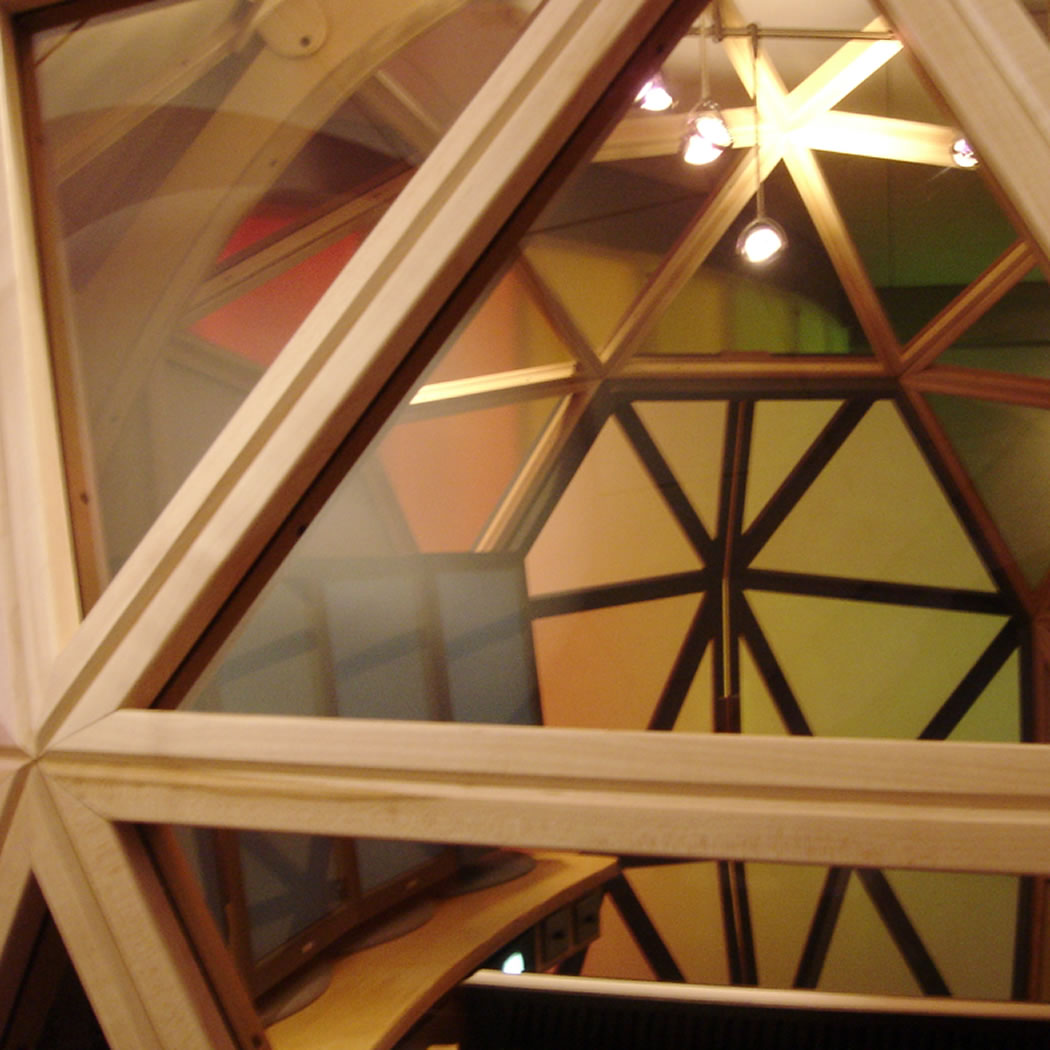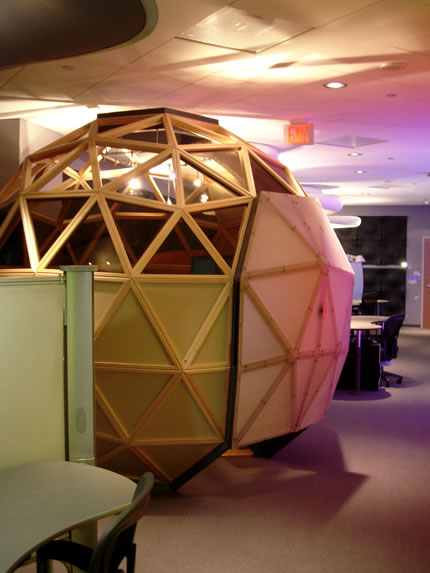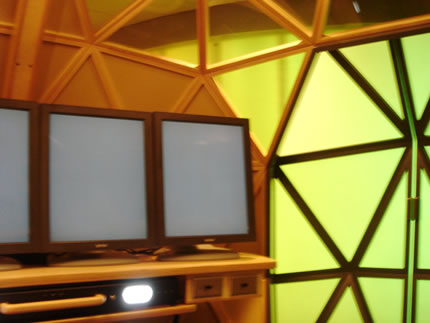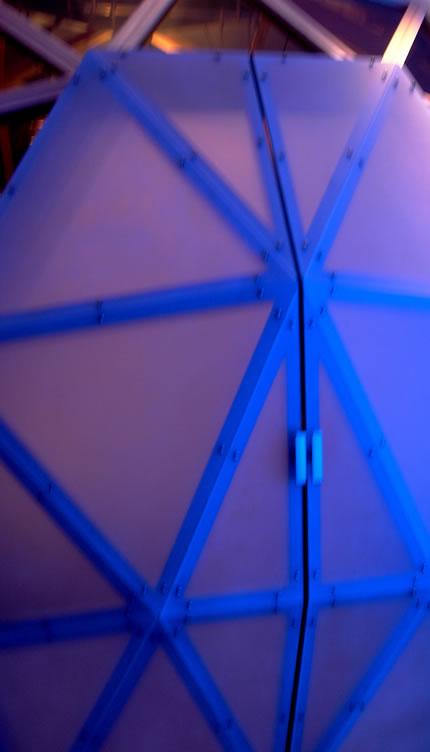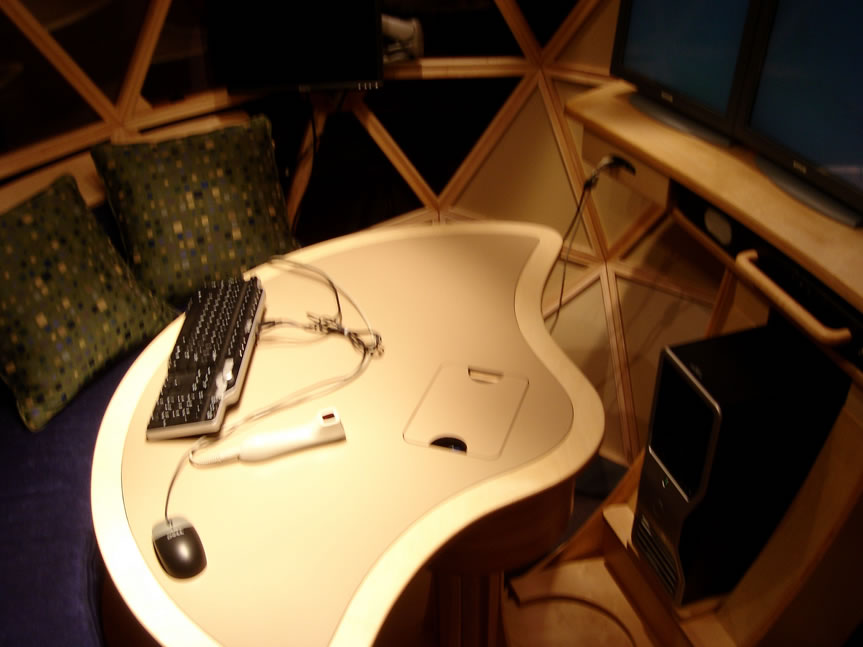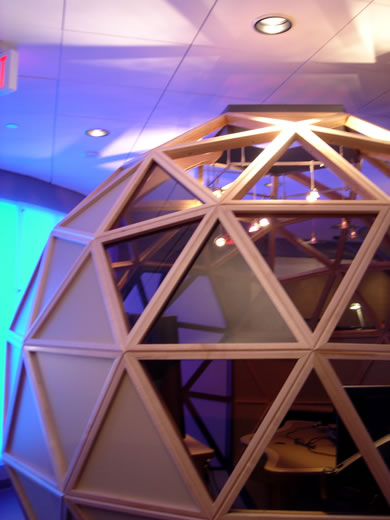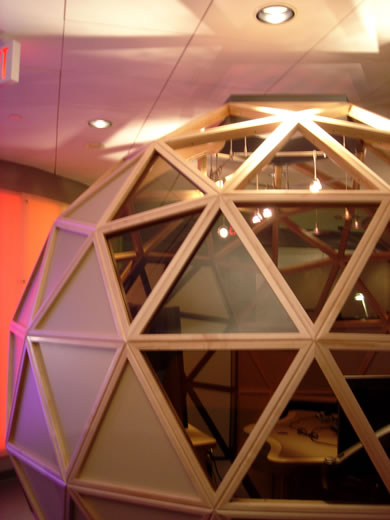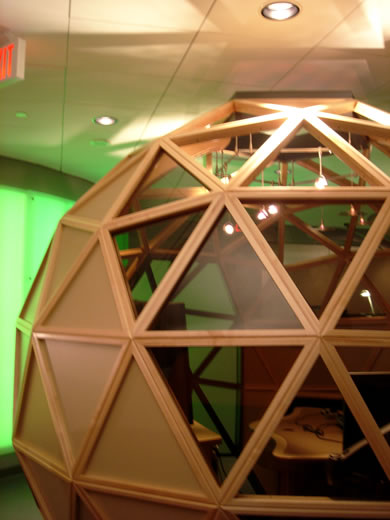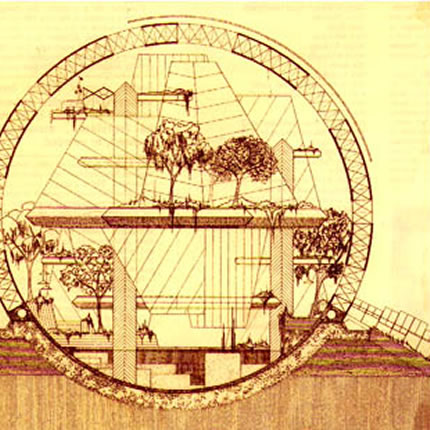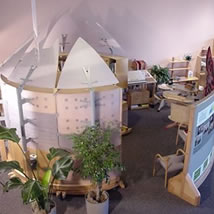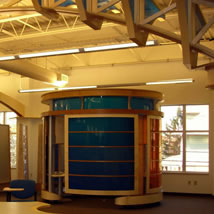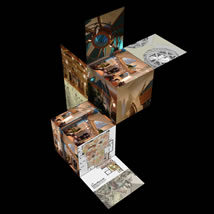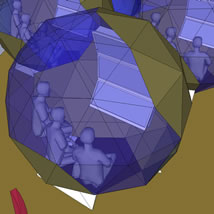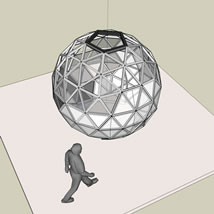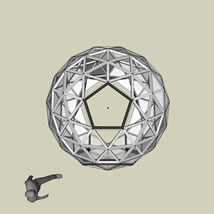ReturnTo: History of WorkPODs • ReturnTo UVA Gallery of WorkPOD photos and drawings
ReturnTo: UVA mediaPOD Gallery of Drawings and photos |
As Installed May 22, 2008 |
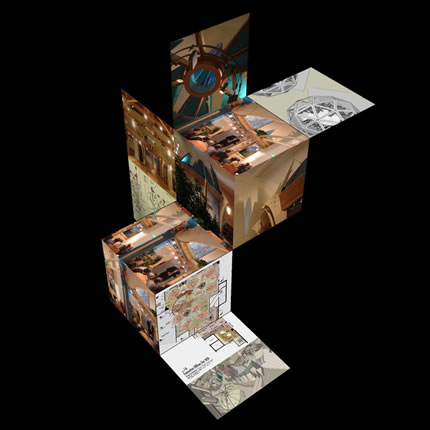 |
“I first began to form the notion of a mental continuum as an idea for the expression in art and architecture when I experienced Frank Lloyd Wright’s Unity Temple and his Prairie-style Coonley House. In these seminal works, executed about 1906, there is and extension of space beyond what the viewer can see in one position. This suggests a sense of immanence in which the seen is charged with causality stemming from the unseen, as if the meaning of the forms in sight depends on continuity and elaboration from implied features in the extensive space beyond immediate view. Such elaboration, always subject to the complex neuronal and synaptic pathways of the mind, allows us to bridge, by feeling and imagination, unseen possibilities and casual connections that are set in motion by Wright’s orchestration of the metaphoric individualities of his forms and materials; for example, that the interior space is extensive, and yet feels both protected and open. The body-mind, from a basic need or security, is led around corners and beyond. The sizes, multiplicities and scale of boards, blocks, patterns, textures and openings suggest a gamut that refreshes and confirms our understanding of human scale and human order, with an appropriateness that we have learned from our reading of nature.
|
|
“At almost the same time that I was able to experience Wright’s architecture, I saw Rembrandt’s paintings in the Metropolitan Museum of Art. I remember poring over lady with a Pink, fascinated by the way in which inflections in the dark background of deep space around the lady gave incident and life to her face, eye, costume, pearls, and the flower in her hand. As I viewed the details of the figure and face, my eye was continually drawn into the background by vague designs resembling these same details. The lady seemed linked to a universe replete with causality. This feeling of the immanence of a causal universe is what I missed in the work of most artists of Rembrandt’s era who also employed the dark, Caravaggio-like backgrounds then in fashion.
“The expression of immanence as an idea is an outgrowth of the Renaissance. The Medieval mind accepted a universe with God at the top and all of the physical elements ranged below Him in a spatial hierarchy, like ornaments on a christmas tree. Reason was not free to question this hierarchy, nor to reflect on the nature of the various elements and their connections to one another and to the world. Renaissance philosophers and artists effected a transformation leading to our modern world-view. According to Ernst Cassirer, ‘ Medieval spatial hierarchies were annihilated... in Renaissance philosophy [italics mine] there is no longer any ‘above’ and ‘below’ but a single universe homogenized within itself. The difference we perceive in the various bodies in the world is not a specific difference of substance, but rather is due to the different proportion in the mixture of the basic elements that are everywhere the same and are disseminated throughout the entire world.’
“Renaissance thinkers, including Leonardo, began to reason that all things are immanent in one another. One’s perception of things fluctuates, so that at one time an object like a tree branch becomes the focus for immanent connection to other things, while at another time the tree branch merges with the background as another object comes into focus. Leonardo’s advice to artists about using a ‘prepared mind’ to imagine various objects in the ambiguous stains on a wall exemplifies these ideas...”
Herb Greene
2003
Painting THE Mental Continuum
Immanence and Figure-Ground
page 45-46 |
|
Authentic architecture [definition] is fact-based and experience-based. Architecture is the synthesis of shelter, arrangement and expression [definition]. It re-frames an everyday experience, facilitates its happening and infuses it with new meaning. This meaning is a context which is derived out of the circumstances, acts, time and place both surrounding and found within the environment. This is a greater context than merely the common, contemporary, narrow definition of function - a definition which in reality is utility focused.
Art eliminates the insignificant; architecture frames and raises all acts taken within it to the level of art. Architecture is the background music of the life lived and work done within it. Architecture changes as it is used and these changes become one aspect of the memory - the sum of the experiences - of its use. [22 aspects of memory].
Authentic Architecture seeks to integrate these experiences and memories into a living context which creates a new level of intimacy between the environment and those who employ it including each other. This connection between the environment and user is mental and physical from the idea of the environment to its texture, color, shapes - all loaded with meaning - to the direct interaction between the built artifact (s) and the user. In this specific case, the mediaPOD is directly engaged with and adjusted by the users in a series of actions from entry, use and exit. As the human-built environment become more dominate, is becomes increasingly important that interaction with the environment become necessary, possible and easy [future link]. In the 21st Century, we must move from the metaphor of a “machine for living” to an organism of living-work which includes Nature, Humanity, technology and the built environment.
Continuity across all aspects of this ecology is essential. From time to time the built environment, and some artifact within it, becomes the topic of focus. Its major role, however, is to be that silent, not consciously perceived yet vital support of the function of living and work. |
|
|
| In terms of the sense and feel of the environment, it is the addition of light which creates the significant change in the “fit” of the mediaPOD into the U.VA. Reading Room. The two pictures (right) show the before and after views and the effect which the final lighting has on the space. The wall at the rear of the mediaPOD, which before was crowding now becomes a layered space defined by shade, shadow and reflected light. The light comes from two sources: the (unfortunately) unusual approach to lighting provided by the architects of the project - a rare and refreshing treatment which rejects the all too common one-level-everywhere paradigm - and the user controllable lighting provide by the mediaPOD itself. The space and the POD become active agents in “dialog” with one another. This and the landscaping provided brings a life-like sense into the room. This is in stark contrast to the standard computer work area. Shade and shadow, reflecting light, variable levels of brightness, cast patterns, colors changing by the reflection of other colors, are natural and too often absent from work. |
|
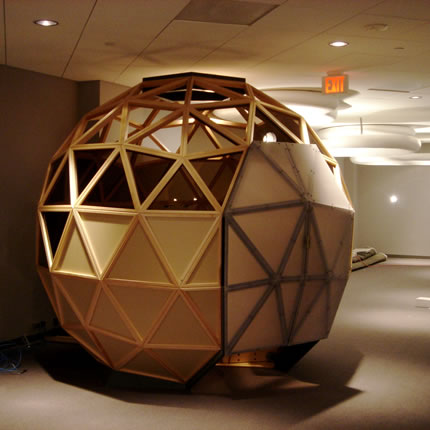 |
|
| The photo on the left is the mediaPOD after the outer dome was installed on April 29th. On the right, May 23rd after the the interior was completed, other workstations were placed and the back-lighted translucent curved wall was illuminated with programmable color cycles. As the other photos below will illustrate, the combination of the luminescent curved wall and the mediaPOD materials and lighting (adjusted to various levels) changes the basic message, mood and sense of the reading Room space. This windowless place deep in a hospital now actualizes some of the attributes of nature. The architect placed the mediaPOD at the narrow part of the room as it wraps around the curved wall. This location, the mediaPOD’s use of opaque, translucent, shades of glazing and open structure combined with its height and internal lighting makes the POD a pivot point in the space creating prospect and refuge and a sense of space going on forever from one discovery of changing states to another. |
|
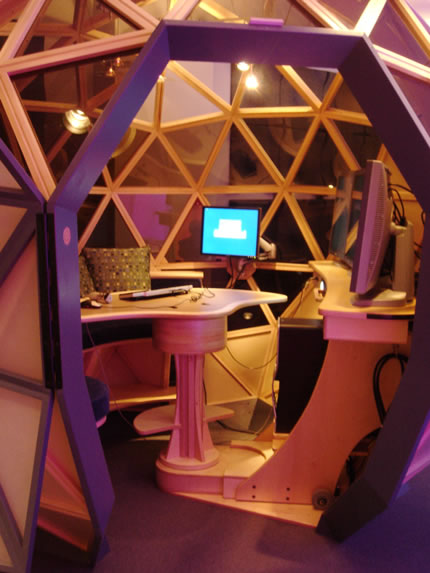 |
At present, the luminous wall is programmed to go through the entire spectrum in a clock wise direction. This continuously changes the background color spectrum of the room. Because of its materials, the mediaPOD picks up this changing spectrum modifying its own color and reflecting the resulting combined colors back out into the space. In reality, the color contrast are not as sharp as these pictures reflect. The result is actually more muted than what appears here.
I expect that the users will change the color sequences over time to add variety and to reflect different seasons. A slower transition of the colors might be interesting - so slow that you cannot see it yet every so often the awareness of a totally different tone. Color, especially changing color is like music. Outdoors, the color is changing all the time. Human-made environments have become stuck in one mode: bright, uniform light of one spectrum with no shade or shadow. The materials commonly used today are not color friendly. They have whatever color they have yet do not absorb and reflect well. Bringing the full spectrum of color back into the work environment is a good trend. It will take patience and experiment to get it right particularly in spaces absent natural lighting like this one. It should also be remembered that colors, in the older traditions, conveyed meaning both natural and symbolic. It will be necessary to employ this awareness once again. |
|
|
| Meaning in architecture is conveyed by denotation and connotation. Every texture, color, form, mass, shape, sequence of events, conveys direct ostensive meaning (denotation) and metaphoric-symbolic meaning (connotation). Every architectural work, intended or not, has a theme - the single integrating idea of the piece. The mediaPOD is a capsule which facilitates the users through the experience of their task - as individuals and as a team - it allows them to “fly” through the data-information in focus. By being able to control interior configuration, doors and lighting, those “flying” the mediaPOD can modulate their awareness of and relationship to the greater space of the Reading Room. The mediaPOD provides a high level of privacy without broadcasting exclusion. This kind of work environment requires engagement by its users. This is deliberate. The human-built environment for most people is the environment they experience. It should embody the characteristics of intrinsic Nature. |
|
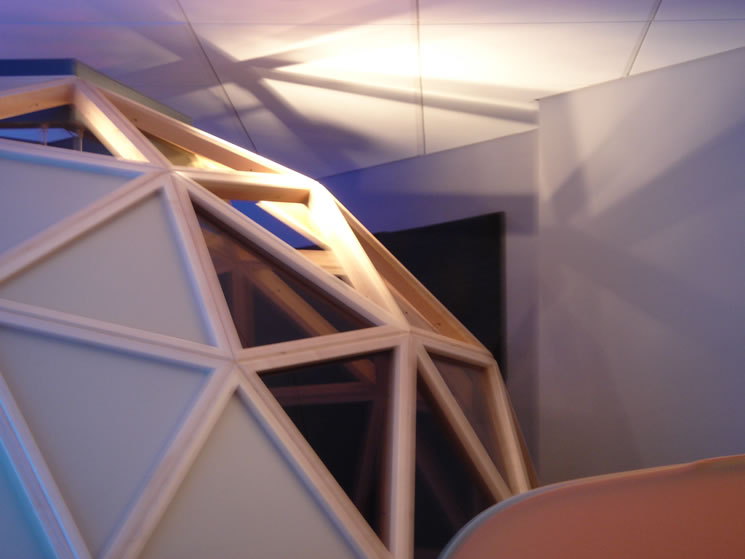 |
Nature has variation. It has color on color on color and multitudinous textures. Nature shows abundant forms few of the them rectilinear. It is capable of immense change in a few minutes of time or feet of travel. It is always changing. Nature is prolific, a riot of forms and interactions. Nature employs astounding technology. A spider web, per pound, is stronger than steel, is manufactured on demand at room temperature and is biodegradable. Contrast Nature to our technologies, cities and typical workplaces. We have a long way to go. This is not a problem. We can learn. The problem is, in the vast majority of our building, we seem to be going in the opposite direction.
Instead of growing out of Nature, extending Nature and integrating with Nature, human-built environments today tend more and more to fight, ignore, dominate, and by consequence, destroy the habitat we once took for granted. It is easy to pretend that this does not matter. Yet the health statistics, in this the most affluent, safe society in known history, tell another story. Our children are exhibiting mental and physical symptoms - and behaviors - once reserved for those much older. Look at the rise of pharmaceuticals across all age groups. We become an ever more compulsive society disconnected with ourselves each other and the world we live in. The vast majority of our architecture reflects this and adds to the increasing mechanical expression of life and work.
The UVA application of the mediaPOD involves a complex, highly technological process the consequence of which is life-critical. The attempt here is to bring a broader sense of life back into this process. The intent, also, is to subtly change the dynamic between those working, learning, consulting together. Doctoring, learning and consulting are intensely human acts. To often, in our transactional world steeped in the false myth of objectivity, the interactions between care giver, learner and patient become frightfully sterile. This does not promote health. |
|
The mediaPOD, then, is not a piece of furniture to be knocked around, defaced and thrown away in a few years to be replace by the latest style.
It is to be treated like a boat - a fine work of art. Users have to be aware of their actions and the consequences which flow from them. They move into the experience and are conscience of beginnings and endings. The mediaPOD facilitates this entry-exit ritual and the many acts which take place in between. This is not to distract users it punctuates their actions moment by moment. Yes this is a busy world, yet, life has a pace which is actually the most productive as every craftsman knows. The mediaPOD is designed to remind one of this pace and the joy of work which is so often lost in the rush of time and the ingrained habits of repetitive work.
We have, as a society, become accustomed to treating our human-built objects with a strange mixture of greed and long term neglect - things to be possessed and invested with little meaning and no life. Always in search of the new, we neglect the past and what we all ready have made. This attitude of consumerism sinks us into the rat race of of the wage-slave who can never get enough. Increasingly, it extends to how we treat “other” peoples as commodities and our planet - the only one we have - as a resource to plunder and then a garbage dump to hold the left over debris. It is a strange materialism which seems so lacking in spirit that even the material thing is neglected after the initial adrenalin rush of “ownership” has faded. Crafted objects are invested first with the life of those who make them and then with the life of those who use them. As they age, they become embodied with life and become more adapted to a time, place and community - they make memory. The mediaPOD, as all our work, is intended to become life-like, and reflects human values. like a boat |
|
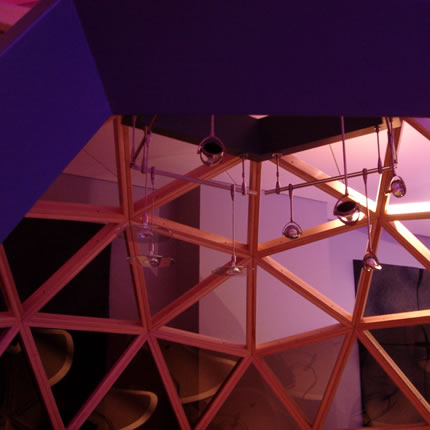 |
|
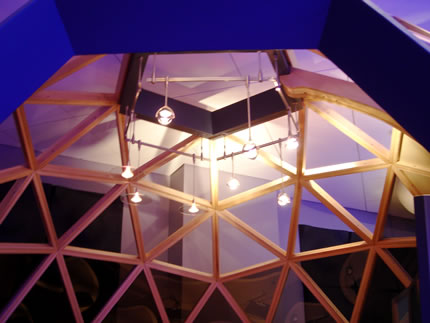 |
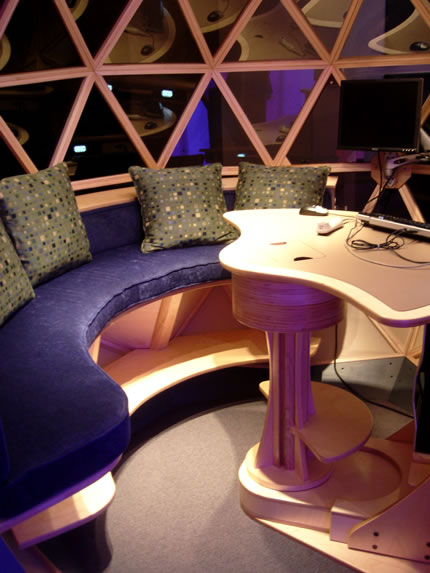 |
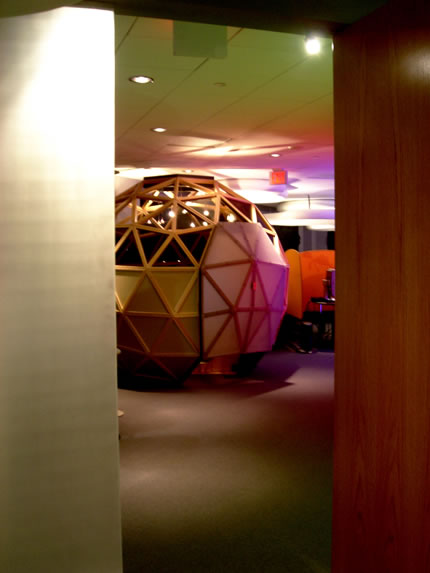 |
Ritual and Interface is a fundamental part of the architectural experience. It is done well or poorly yet always done. Today, great attention is invested in the making of computer and phone interfaces work yet it it is not realized that every transition in a space give rise to an interface experience. There is no such ting as a Mac OS for door knobs.
Interface in architecture involves sight, touch, smell, temperature, movement, body posture and the sense of changing space. These senses combine in different ways and are experienced in sequence. Each, and many in combination, provoke memories and make new ones. These memories have different meaning to each person and are built on an number of organic universal constants and cultural nuances.
When the design is right, the act of moving through a door and adjusting a space for work can be a rich experience which settles the body and mind into the task. The relationship with co-workers doing the same can positively engage them in a common ritual of coming to work. This setting-the-space for their joint action can align the focus and energy of the team. This is in contrast to furniture and environments which reduces this personal and group transition to a dry task without grace or meaning. Theatre has its overture yet work rarely does. Craft work employs ritual to enhance awareness. |
|
Setting the mediaPOD to work involves several steps: opening and coming through the doors; rotating the work top around for accessing the setting (if it was not parked already - shown above); sitting in the appropriate order, bringing the work top around, plugging laptops (if required) into the recessed power and Internet connections; closing the doors (if desired); pulling the four monitor table forward on its base, and then on its extending slider shelf; rotating it appropriately and adjusting the lighting as wanted (three switches and two dimmers); locating the mouse, keyboard, foot pedal and microphone, booting the computer, adjusting the fifth screen (which displays the menu and translated dictated words); and then proceeding with the session. Cushions and two foot rests are provided to assist adjusting for different body sizes. All of this takes about a minute and is expected that the mediaPOD will be configured differently based on individual and team preferences.
The mediaPOD is now ready for the team to “fly” though the images and information available and to complete their assessment and document conclusions. During the session the five screens can be adjusted and rotated as will best support each person seeing what they need to see while in dialog. Lights can be adjusted both to assist in seeing the screens and for writing tasks as well as setting the degree of inclusion-exclusion desired.
The exit process is the opposite starting with pushing the four monitors all the way back, rotating the work top and stepping out. It is polite to reset the space so that it is and invitation-to-work for the next team. |
|
|
The radiology reading process which the mediaPOD is designed to support is usually done by a single person. As I understand it, the mediaPOD will be used for this purpose and also teaching and patient consultation. I think that it is for these circumstances that the strong sense of enclosed environment and the non-confrontational seating will be of highest value.
The environment stresses a “we are in this together” sensibility no mater who may be the teacher or authority rendering what often may be difficult to understand and personally challenging information and advice.
This leaves the formal hierarchy in place yet blunts its often negative impact on the ability of people - especially in a group - to engage in the quality of peer-to-peer conversation so necessary to science and correct resolution in times of personal challenge.
This Reading Room conceived by Dr, Dake [future link] and designed by Perkins Eastman [future link] is not your father’s hospital environment. The mediaPOD certainly carries the design intent to what many will consider the extreme end of the spectrum. Conventionally this may seem so. In reality, not. It is time to challenge the common expression of the hospital and transform it - for healthcare providers as well as recipients - from a place which sends the dominate message of sterility, passiveness and sickness to one which broadcasts healing, human health and social involvement. I believe the hospital environment has been sending the wrong message for decades and it is time to communicate patient involvement with collegial health providers in an active, mutually respectful process.
Healing - this most human of human work - has had the wrong image ever since science - certainly a good thing - has risen to its present dominance. The hospital is rid of the smell of either which used to strike terror in the heart of so many yet is has yet to shed the industrial utilitarian posture which makes so many feel like the are serving a machine instead of a healing society assisting them on their path to buoyant health and longevity. |
|
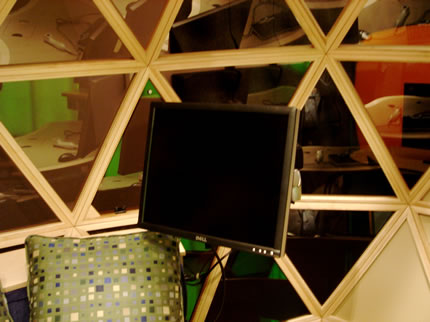 |
 |
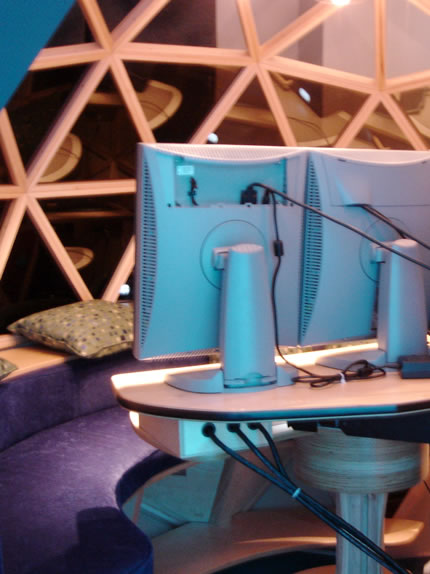 |
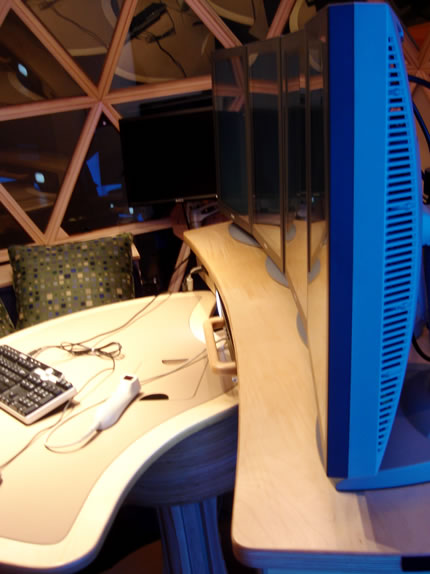 |
| The mediaPOD establishes a new level of intimacy for the production workstation. This has been accomplished before in a few rare, custom designed and highly expensive pieces. The mediaPOD is a composite of production and craft methods employing materials that people like to be close to. It is a personal piece of furniture which has architectural scale. This means it functions as an environment not just as something in a room. It brings architectural quality to the space - helping to shape that space - within which it is a part. |
| We are accustomed in our society to separate the mind from body and spirit. This dichotomy is reflected in the workspace by the practice of utilitarian environments and work-processes which too often ignores art and preempts the emergence of insight. Much of our use of technology merely amplifies this mechanistic viewpoint rather than augmenting the natural human creative process. Symbol is not absent in these environments. It is distorted by only presenting a money-dominated, command and control, short term results paradigm which ignores the values commonly shared by the vast majority of Humanity. Effectiveness and humanity gives way to a false definition of efficiency and profit. It is not that the values thus expressed in the typical modern workplace are wrong - it is that they are woefully incomplete. |
| Then, there is surprise and shock when an Enron hits the news. The shock, to me, is that people are shocked. The results were the direct output of the engine that was created. The purpose of a system is its output. It is time to look at our output and reverse engineer. |
|
|
I have never been able to reconcile the contrast between the spaces which people typically work in and their choices in transportation and the effort they bring to their home environment. In a work-life, this means over 100,000 hours spent in a circumstance that their personal choices almost totally contradict. Economics is offered up as the universal scapegoat. it is indeed a strange misapplication of the concept economics. In a world increasingly fueled by knowledge work - the “office” is now the factory and the factory is infused with knowledge work and design. Thinking and production are becoming one. |
| The corporation, government or institution is no longer the focus - the ValueWeb of customers, producers and investors, as a creative system, it what produces wealth. These realities are not yet reflected in the design of the workplace nor its processes. The modern workspace it physical and virtual; it is personal and commons; it is economic and ecological. |
| Applying aesthesis to an unchanged social and physical architecture will change little. This is at best decoration - better than ugly yet impotent to change much. True beauty results when the expression emerges out of an organic circumstance which is the consequence of a democratic, self-disciplined, open-ended method of living and work. Architecture is fact-based. It can only reveal the philosophy behind it. American culture - and now increasing numbers over the rest of the world - is blatantly anti-philosophical. And, for good reason. Self-examination, it can be inferred, is too painful - certainly too expensive. Yet, examine is what we have to do if our civilization and planet is to endure. |
|
|
In an 1951 interview with Hugh Downs, Mr. Downs asked Frank Lloyd Wright which was his greatest building. Wright, who was 85 at the time and lived and worked to just shy of 92, replied: “My dear boy, the next one.”
|
Implications and Next Steps: |
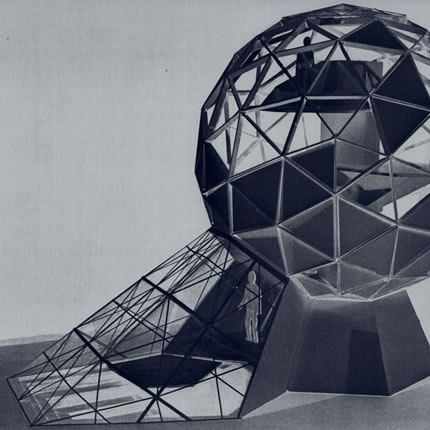 |
POD to what? Well, first, the ongoing development of all of the AI PODs is the priority. This involves refining the shells and their manufacturing process to make them more reliable and economical. Then, a concerted effort to make different interiors that can be crafted to adapt to a wide variety of specific situations. In other words to increase the intimacy factor. With all this, the design/build/install process must be refined in order to deliver the greatest value: the most POD for the least cost, time and difficulty. This refining process of all AI PODs is easily a two year project.
In parallel with this is the development of three projects all of which date back to the 60s and 70s: EcoSphere, Snowflake and Domicile. It is interesting that these old projects, other than the postUsonian Project, now receive more visits and e-mails than any of the 180 plus projects - both built and un built - I have listed in my index of work. This says to me that we are returning to a time similar to the period when these were first conceived.
EcoSphere, whose dome is two and a half times larger than the mediaPOD, is still waiting for a site and sponsorship. Snowflake is being studied and developed for two possible applications: the MG Taylor compound outside of Nashville and the 6th grade cluster and expanded NavCenter for masters Academy in Calgary, Canada. Snowflake requires structural components about three time larger that the mediaPOD and, like EcoSphere and Domicile, its outer shell will have to be weather worthy. The interest in Domicile continues to grow. This project is based on a geodesic five to seven times the mediaPOD. It is an open question if the structural components can be fabricated in wood or will require steel or aluminum. The interior pieces, however, will be shop build in modular sections like the other two projects and the postUsonian. The economic and co-housing aspect of Domicile, along with its smaller per-person ecological footprint, is fueling the present interest after a 32 year latent period. Recent advances in materials, electronics and collaborative processes make this an imminently feasible project. |
|
|
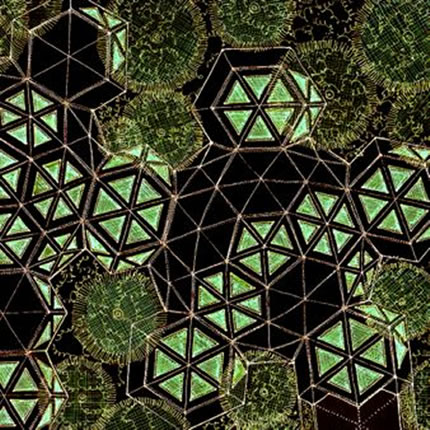 |
The Industrial Paradigm Model rules the design and subsequent MESSAGE of our major institutions with schools and hospitals leading the way.
We know how powerful messages like this are else there would be neither an advertising nor movie industry. Is it radical to suggest that these messages have a profound effect on the process of healing? Is is blasphemy to suggest that our students learn not only what we tell them but also what we show them about ourselves and our expectation of them by the total environment we put them in?
Would there be different and happier results if the total message of our built environment was congruent with the values we CLAIM are the basis of our culture and society? |
|
| Our build environment is the mirror of our inner values and it helps shape those values. Architecture is built mind. The form of a building, its pattern language, the way it is built and used, is a language that expresses our soul. |
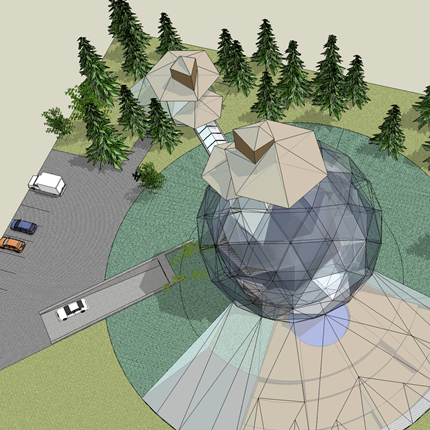 |
Our large Armature pieces and PODs are steps to these projects. The capability now exists and we have tested it. What connects these older projects to the work of the AI Shop and contemporary projects? Size, although we have had to “built up” to these larges projects, is not the issue. the special quality of the space is. Also, learning how to deal with the special challenges of the geodesic geometry ties all of these together. As I say in the introduction to my web site:
“everything here has to be taken in context with everything here - and everything it is linked to.
Else...
Too much is stripped away.”
Every project, be it architectural, furniture, process facilitation, technology development, or building and growing a ValueWeb to support large-scale systemic transformation, is tightly connected. They are all pieces of one another, built on one another, inform one another, and each is the whole story within itself. This is a fractal, recursive practice conducted over decades.
Each project is invested with the whole of a life - it stands alone yet is integral to a body of work much greater than my singular effort. |
|
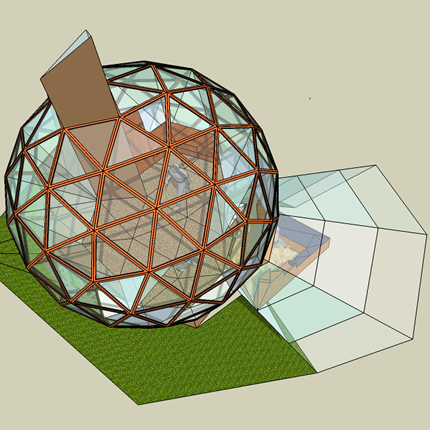
| Other than scale, there is no difference between a small interior, a great building, a city or the not yet recognized global architecture. The whole and the parts are equally important. All aspects, from small to large deserve our full attention and craft. |
|
Note: the images above will shortly be supplemented with new 3d drawings of the projects in their currant iteration - click on the images to go to project pages |
posted: May 17, 2007 • revised August 25, 2010 @ 2:37 PM |
|
